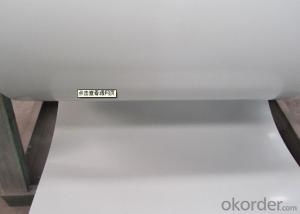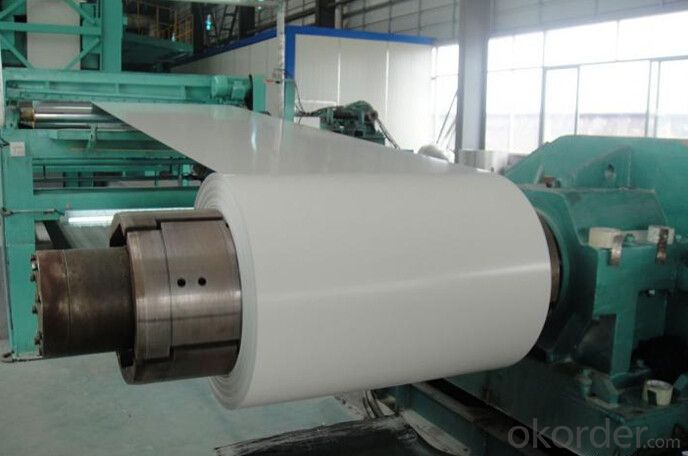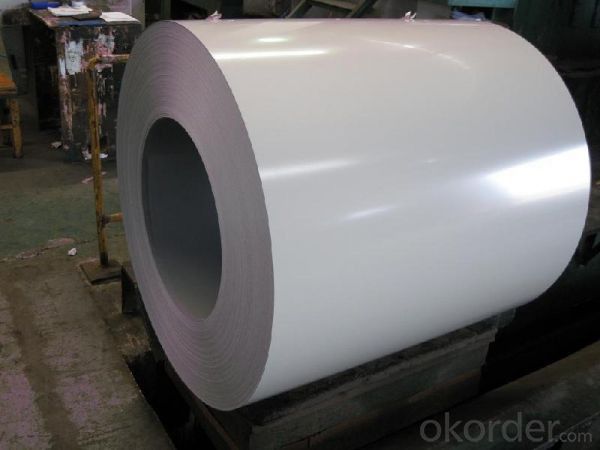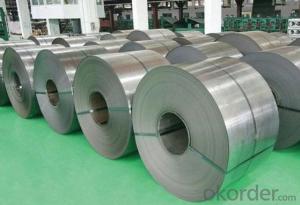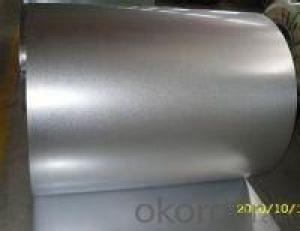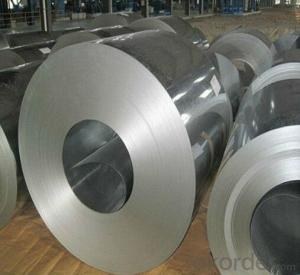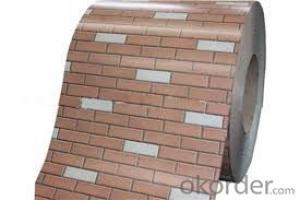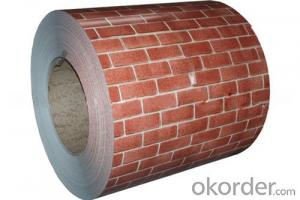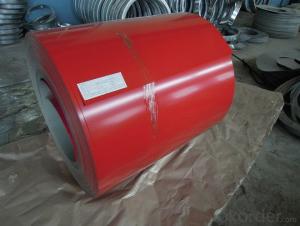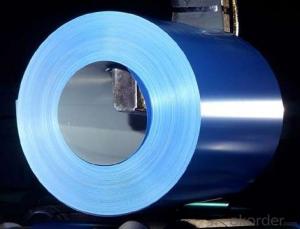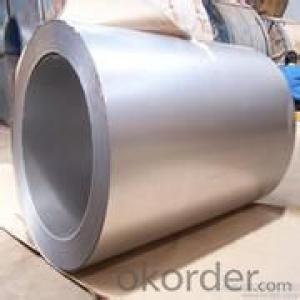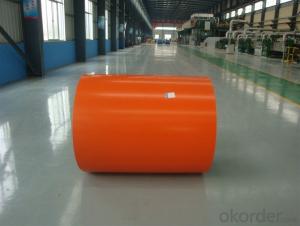Color Coated galvanized Cold Rolled Steel coil
- Loading Port:
- Tianjin
- Payment Terms:
- TT OR LC
- Min Order Qty:
- 50 m.t.
- Supply Capability:
- 300 m.t./month
OKorder Service Pledge
OKorder Financial Service
You Might Also Like
Color coated hot rolled steel coil takes hot-dip galvanized steel coil asits basic material. Factory adopts the newest technologies and the mostadvanced equipments to degrease, rinse, chemical transform the cold-rolledsteel coils or galvanized steel coils. Then we make primary and refined lavation
for the steel strips. We use worldwide advanced solidify furnace to solidify the coasting surface.This kind of color painted coils has excellent capability of decoration, molding,
corrosion resistance ability. It keeps the products with color coatings inflamboyant color for a long time.Nowadays, it has become the most perfect building materials in construction, transportation,
manufacture, light industry, office furniture, household electric appliances,
food package, and other areas all over the world.
Features:
1) Thickness: 0.2 - 1.5mm
2) Width:<1250mm< span="">
3) Lacquer: according to customer's needs
4) The color-coated steel coil is produced by hot-galvanized steel and color-coated with the paint produced according to the American standards
5) The combining force between the galvanized steel and the paint is very strong
6) The surface is polish
7) Coat fabric 2/2 (two coats for top / two coats for bottom)2/1 (two coats for top / single coat for bottom)1/1 (single coat for top / single coat for bottom)
8) Colors: white, black, sky blue, bright red, yellow
9) Can be used in building material field, galvanized wire steel tape and all other fields.
- Q: What are the different types of steel coil packaging machines?
- There exists a variety of steel coil packaging machines in the market, each serving a specific purpose. These machines are designed to package steel coils efficiently and effectively for storage, transportation, or distribution. Some of the available types of steel coil packaging machines are as follows: 1. Fully automated steel coil packaging machine: This machine is equipped with advanced technology and can handle large-scale packaging requirements. It wraps the steel coils with a protective layer of film or paper and can also apply strapping or stretch film to secure the coils during transportation. 2. Semi-automated steel coil packaging machine: This machine requires some manual intervention for loading and unloading the steel coils. It is suitable for medium to high-volume packaging needs and strikes a good balance between automation and cost-effectiveness. The machine typically employs a combination of wrapping, strapping, and shrinking techniques to package the coils. 3. Steel coil packaging machine with a vertical design: This machine is specifically designed for packaging vertical steel coils. It wraps the coils with a layer of film or paper and then applies strapping or stretch film to secure them. The vertical design facilitates easy loading and unloading of the coils. 4. Steel coil packaging machine with a horizontal design: This machine is ideal for packaging horizontal steel coils. It wraps the coils with a protective layer of film or paper and then applies strapping or stretch film to secure them. The horizontal design ensures convenient loading and unloading of the coils. 5. Customized steel coil packaging machine: Certain manufacturers offer customized packaging solutions tailored to specific requirements. These machines can be adjusted to accommodate different coil sizes, shapes, and packaging materials. They are designed to provide utmost flexibility and efficiency in the packaging process. To summarize, the different types of steel coil packaging machines encompass fully automated, semi-automated, vertical, horizontal, and customized machines. The selection of a suitable machine depends on factors such as packaging volume, coil orientation, and specific requirements of the steel coils being packaged.
- Q: How are steel coils classified based on their thickness?
- Steel coils are classified based on their thickness using a gauge system, where the higher the gauge number, the thinner the coil.
- Q: Are steel coils used in electrical equipment manufacturing?
- Yes, steel coils are commonly used in electrical equipment manufacturing. They are often used in the construction of transformers, motors, generators, and other electrical devices. The steel coils provide structural support, magnetic properties, and efficient conduction of electricity, making them an essential component in electrical equipment manufacturing.
- Q: Can steel coils be coated with copper?
- Yes, steel coils can be coated with copper.
- Q: I want to hear from those who own a scandium revolver. I know that scandium makes for a much lighter gun than steel, but how do they hold up durability-wise? Is their lifespan shorter than a comparable steel revolver?
- This Site Might Help You. RE: Are scandium revolvers as durable as steel? I want to hear from those who own a scandium revolver. I know that scandium makes for a much lighter gun than steel, but how do they hold up durability-wise? Is their lifespan shorter than a comparable steel revolver?
- Q: We have a stain from a pot or bowl in our new expensive stainless steel sink. It looks like a water mark that happens when you leave a glass on a table without a coaster. It's a mark in the shape of the bowl or pot that was there. We left it there overnight:( It's not rust either. Help!
- The best product I have ever come across is Barkeeper's Friend. I use the liquid version rather than powdered version. It is a soft soft abrasive scrub designed for stainless steel. I original found it to use it on all my All Clad pots and pans to keep them beautiful and shining. I also have a stainless kitchen now, sink, stove and fridge...and I use Barkeepers on everything. It is fantastic. If you don't want to go out and find Barkeepers tonight, you can get a similar affect using baking soda mixed with dish soap. Make a good paste to gently rub on stains. Be sure to rinse the stainless steel surface thoroughly, and towel dry. If the stains still remain you can try vinegar. Remember to thoroughly rinse and towel dry. But tomorrow go out and get a bottle of BarKeeper's Friend...you will never regret it. UPDATE: just saw a few other answers, DO Not use steel wool (SOS pads) you will scratch the heck out of the finish and you will not be able to fix it.
- Q: Explain why a steel nail sinks but a steel ship floats.
- A steel nail is much denser than the water. That means that it weighs more than an equivalent volume of water. Therefore, the buoyancy is never going to be enough to hold it up. Whether it is a big steel nail or a small one, it will always be too dense for the water to support it. Because of its shape, a steel ship is not as dense as water. It is not made out of a solid block of steel. Instead, the hull is built of thin plates of steel enclosing an open space. A steel ship is sort of like an empty cup. Although its sides are hard and dense, it holds a lot of air in the middle. Since air weighs almost nothing, it lowers the overall density of the ship to a point where its buoyancy exceeds its weight, and the ship floats. Think of it as you trying to sink a balloon.
- Q: can you play one?
- Well, my digital piano has a Steel Guitar setting that makes it kind of sound like one, but other than that I know nothing about them.
- Q: What are the common surface finishes available for steel coils?
- There are several common surface finishes available for steel coils, depending on the desired application and aesthetic requirements. One of the most common surface finishes is hot-dip galvanized, which involves coating the steel coil with a layer of zinc. This finish provides excellent corrosion resistance and is commonly used in outdoor applications where the steel is exposed to moisture and harsh weather conditions. Another popular surface finish is electro-galvanized, which is achieved by applying a thin layer of zinc to the steel coil through an electroplating process. This finish also provides good corrosion resistance but is generally not as durable as hot-dip galvanized. Additionally, steel coils can be coated with a layer of paint or polymer to enhance their appearance and provide additional protection against corrosion. These coatings can be applied in various colors and finishes, such as matte or glossy, to suit specific aesthetic requirements. Furthermore, steel coils can undergo a process called mill finish, which involves leaving the steel in its raw and untreated state. This finish is often used when the steel coil will undergo further processing or coating at a later stage. Other surface finishes for steel coils include stainless steel finish, which is achieved through a passivation process to enhance the steel's resistance to corrosion, and brushed or polished finishes, which are typically used for decorative purposes. Overall, the choice of surface finish for steel coils depends on factors such as the intended use, environmental conditions, and desired appearance, with each finish offering its unique advantages and characteristics.
- Q: What is the material of steel coil 08F and what brand can be used instead?
- The high quality carbon structural steel, carbon steel, steel commonly referred to as. Steel for the manufacture of parts for various machines.1.08 and 08F steel is used for rolling thin plates, deep drawing products, oil drums and high-grade enamel products. It can also be used for the manufacture of pipes, gaskets and core parts with low strength requirements, carburizing and cyaniding parts, welding electrodes and so on.2.10 and 10F steel, use cold pressing deep drawing products below 4mm, such as deep drawing vessel and shell. It can also make boiler tubes, oil drum covers and steel strips, steel wires, welding pieces and mechanical parts.3.15 and 15F steel are used to make carburizing parts, fastening parts, die forging parts and low load parts without heat treatment, such as bolts, screws, flanges and storage tanks for chemical machinery, steam boilers, etc..
Send your message to us
Color Coated galvanized Cold Rolled Steel coil
- Loading Port:
- Tianjin
- Payment Terms:
- TT OR LC
- Min Order Qty:
- 50 m.t.
- Supply Capability:
- 300 m.t./month
OKorder Service Pledge
OKorder Financial Service
Similar products
Hot products
Hot Searches
Related keywords
